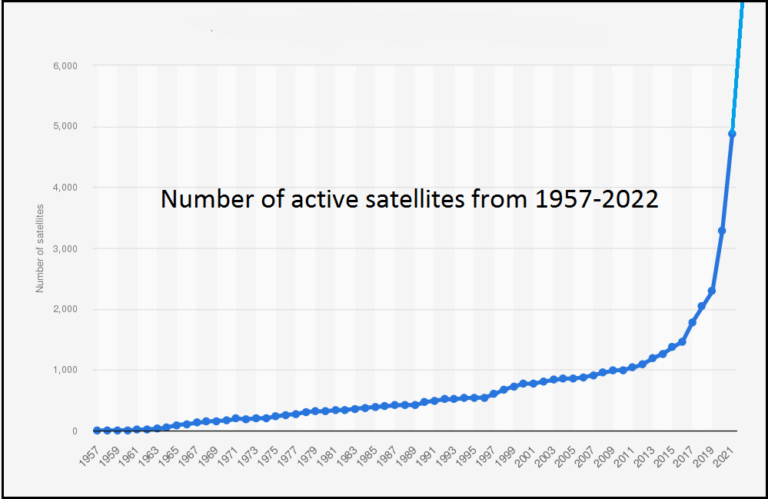What are the Consequences of Sending Thousands of Satellites into Orbit Around Earth?
On the evening of Thursday, December 8, 2022, OneWeb launched 40 satellites from Cape Canaveral, Florida, bringing the total number of active satellites in orbit around the Earth to more than 7,000. These cell towers in space are altering the electromagnetic environment of the entire planet and are debilitating and exterminating all life on it. Even the first fleet of 28 military satellites launched by the United States caused a worldwide pandemic of influenza when they became operational on June 13, 1968. The Hong Kong flu began in June 1968, lasted through April 1970, and killed up to four million people worldwide. Up until about a decade ago, an average of 80 to 100 satellites per year were launched into varying orbits. Some reentered Earth's atmosphere quickly, while others will remain in orbit for decades. This now seems quaint. In the last five years, driven largely by the rise of communications networks such as SpaceX's Starlink and a proliferation of small satellites, the number of objects launched into space has increased dramatically. In 2017, according to the United Nations Office for Outer Space Affairs, the annual number exceeded 300. By 2020, the annual number of objects launched exceeded 1,000 for the first time. This year, the total has already surpassed 2,000. With more broadband-from-space networks like Amazon's Project Kuiper on the way, further growth can be expected. This radically increasing number of satellites, most of which are orbiting within 1,000 km of the Earth's surface, comes as low-Earth orbit is ever more cluttered with debris. At some point, the heavens above will reach a breaking point.



